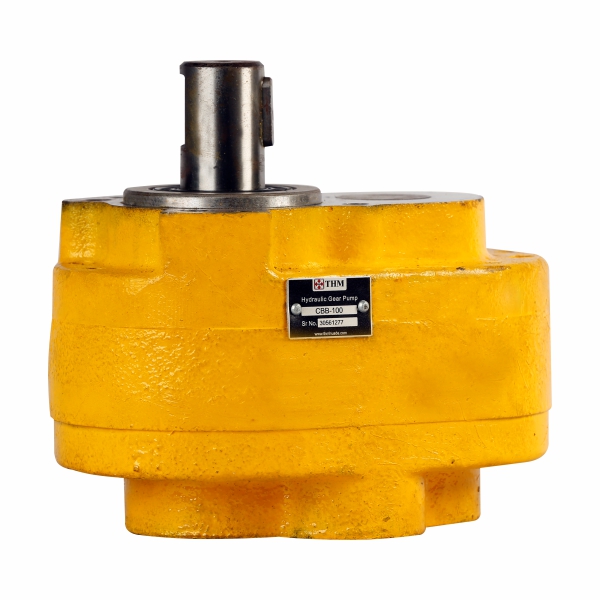Gear pumps are vital components in numerous industrial applications due to their efficiency and reliability. Understanding the various types of gear pumps and their specific applications can help you select the right pump for your needs, ensuring optimal performance and longevity. This blog post will delve into the different types of gear pump, their working principles, and where they are commonly used.
What Are Gear Pumps?
Gear pumps are a type of positive displacement pump that use gears to move fluid. They are known for their ability to handle a wide range of viscosities and provide a steady, pulseless flow, making them ideal for precise fluid transfer and metering applications. Gear pumps are commonly used in industries such as oil and gas, chemical processing, food and beverage, and manufacturing.
How Do Gear Pumps Work?
The basic operation of a gear pump involves the meshing of gears to move fluid from the inlet to the outlet. Here’s a step-by-step breakdown of how they work:
-
Intake Phase: Fluid enters the pump through the inlet as the gears begin to rotate. The rotation of the gears creates a suction effect, drawing the fluid into the spaces between the gear teeth.
-
Transfer Phase: As the gears continue to rotate, they carry the fluid trapped between the teeth and the pump casing towards the outlet side of the pump.
-
Discharge Phase: The meshing of the gears at the outlet forces the fluid out of the pump, maintaining a steady flow.
This continuous process ensures a consistent and reliable transfer of fluid, making gear pumps highly efficient for various applications.
Types of Gear Pumps
There are several types of gear pumps, each designed to meet specific needs and handle different types of fluids. The most common types include external gear pumps, internal gear pumps, and gerotor pumps.
1. External Gear Pumps
External gear pumps are the most widely used type of gear pump. They consist of two identical gears that mesh together within a housing. Here’s a closer look at their features and applications:
-
Features: External gear pumps have a simple design, with two gears rotating in opposite directions. They offer high pressure capabilities and are capable of handling a wide range of viscosities.
-
Applications: These pumps are commonly used in hydraulic systems, fuel transfer, lubrication, and chemical processing. Their ability to handle high pressures makes them suitable for applications requiring precise fluid control.
2. Internal Gear Pumps
Internal gear pumps feature a gear within a gear design, where a smaller internal gear meshes with a larger external gear. This design allows for smooth and efficient fluid transfer.
-
Features: Internal gear pumps have fewer moving parts compared to external gear pumps, resulting in lower noise levels and less maintenance. They are capable of handling high viscosities and are self-priming.
-
Applications: These pumps are often used in applications involving high-viscosity fluids such as oils, resins, and adhesives. They are also used in food and beverage processing, where gentle handling of products is required.
3. Gerotor Pumps
Gerotor pumps are a type of internal gear pump that uses an eccentric rotor and a matching inner gear to move fluid. They are known for their compact size and smooth operation.
-
Features: Gerotor pumps have a simple and compact design, making them ideal for applications with space constraints. They offer smooth and quiet operation, with minimal pulsation.
-
Applications: These pumps are commonly used in automotive applications, such as engine lubrication and fuel transfer. They are also used in hydraulic systems and portable equipment where space is limited.
Applications of Gear Pumps
Gear pumps are versatile and find applications across various industries due to their reliability and efficiency. Here are some common applications of gear pumps:
1. Oil and Gas Industry
In the oil and gas industry, gear pumps are used for transferring and metering crude oil, refined products, and various chemicals. Their ability to handle high pressures and viscosities makes them ideal for this sector. Gear pumps are also used in offshore drilling rigs and refineries, where reliable fluid handling is crucial.
2. Chemical Processing
Gear pumps are widely used in chemical processing due to their ability to handle aggressive and corrosive fluids. They are used for transferring acids, solvents, and other chemicals in precise quantities. The reliability and accuracy of gear pumps make them essential in maintaining process integrity and safety.
3. Food and Beverage Industry
In the food and beverage industry, gear pumps are used for handling various products such as syrups, oils, and sauces. Their gentle handling of high-viscosity fluids ensures product integrity and quality. Gear pumps are also used in metering and dosing applications, where precise control of ingredient quantities is required.
4. Manufacturing and Industrial Applications
Gear pumps are used in a wide range of manufacturing and industrial applications. They are employed in hydraulic systems for machinery operation, lubrication systems for equipment maintenance, and cooling systems for temperature control. Their versatility and reliability make them indispensable in maintaining smooth and efficient operations.
5. Automotive Industry
In the automotive industry, gear pumps are used for fuel transfer, engine lubrication, and transmission fluid handling. Their compact size and efficient operation make them ideal for automotive applications, where space and reliability are critical factors.
Advantages of Gear Pumps
Gear pumps offer several advantages that make them a popular choice in various applications:
-
High Efficiency: Gear pumps provide consistent and efficient fluid transfer, with minimal energy loss.
-
Versatility: They can handle a wide range of viscosities and fluid types, making them suitable for diverse applications.
-
Reliable Operation: Gear pumps are known for their reliability and durability, with minimal maintenance requirements.
-
Compact Design: Their compact size allows for easy integration into systems with space constraints.
-
Smooth Flow: Gear pumps provide a steady, pulseless flow, which is essential for precise fluid control.
Maintenance and Troubleshooting Tips
To ensure optimal performance and longevity of gear pumps, regular maintenance is essential. Here are some maintenance and troubleshooting tips:
1. Regular Inspection
Inspect the pump regularly for signs of wear, leaks, or damage. Check the gears, bearings, and seals for any abnormalities. Early detection of issues can prevent costly repairs and downtime.
2. Lubrication
Ensure that the pump is adequately lubricated to reduce friction and wear. Use the recommended lubricants specified by the manufacturer and maintain the proper oil levels.
3. Cleanliness
Keep the pump and its surroundings clean to prevent contamination. Dirt and debris can cause damage to the internal components and affect the pump’s performance.
4. Temperature Control
Monitor the operating temperature of the pump. Excessive heat can cause thermal expansion and damage the pump’s components. Ensure that the pump is adequately cooled and avoid operating it beyond the recommended temperature range.
5. Seal and O-Ring Inspection
Check the seals and O-rings for wear and replace them if necessary. Leaking seals can lead to loss of efficiency and potential damage to the pump.
6. Performance Monitoring
Monitor the pump’s performance regularly by checking the flow rate, pressure, and power consumption. Any significant deviations from the normal operating parameters may indicate a problem that needs to be addressed.
Conclusion
Understanding the different types of gear pumps and their specific applications can help you select the right pump for your needs, ensuring optimal performance and reliability. Whether you are in the oil and gas, chemical processing, food and beverage, manufacturing, or automotive industry, gear pumps offer versatile and efficient fluid handling solutions. By following regular maintenance practices and monitoring performance, you can ensure that your gear pump continues to operate smoothly and efficiently, providing reliable service for your specific application.



